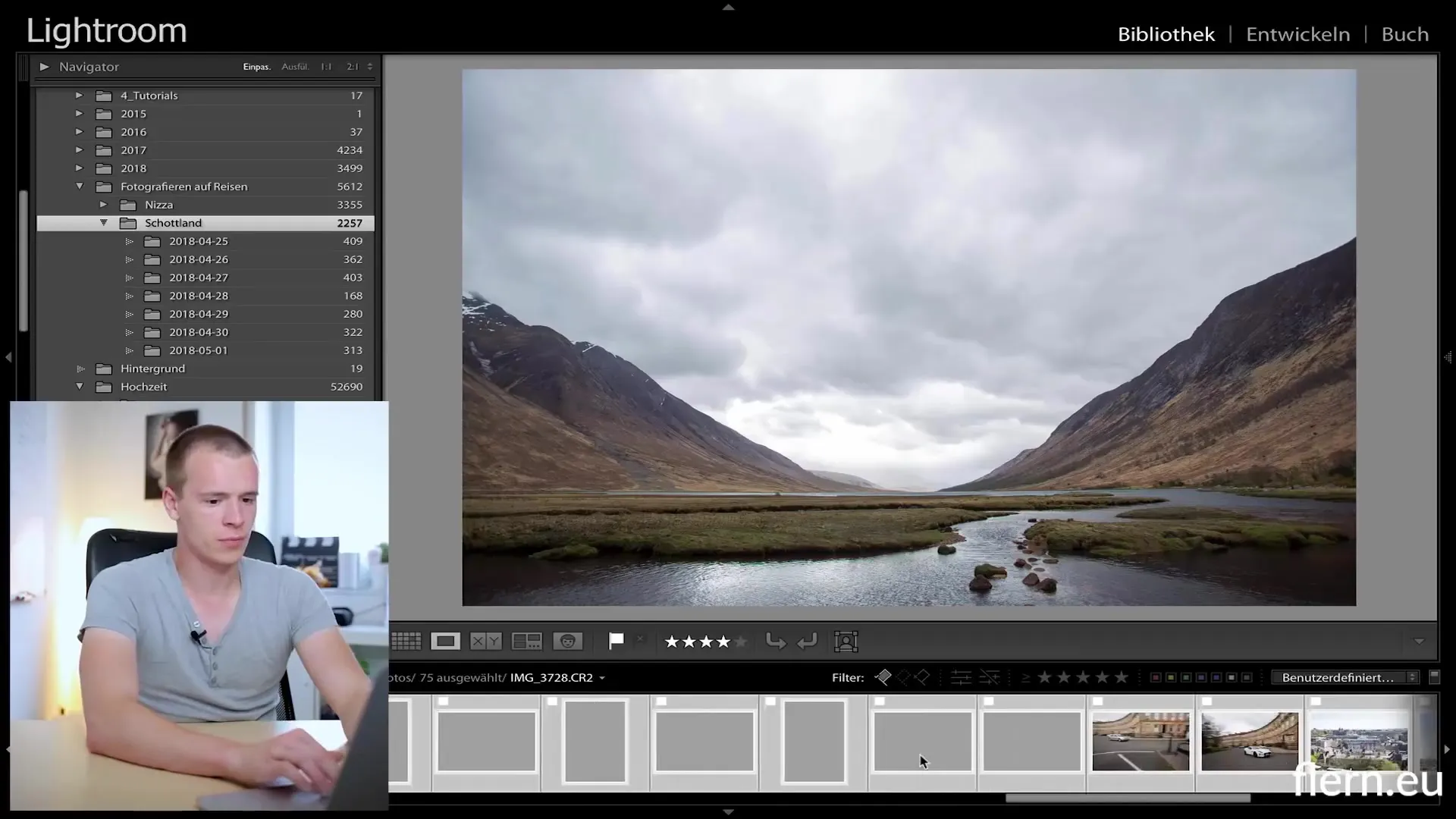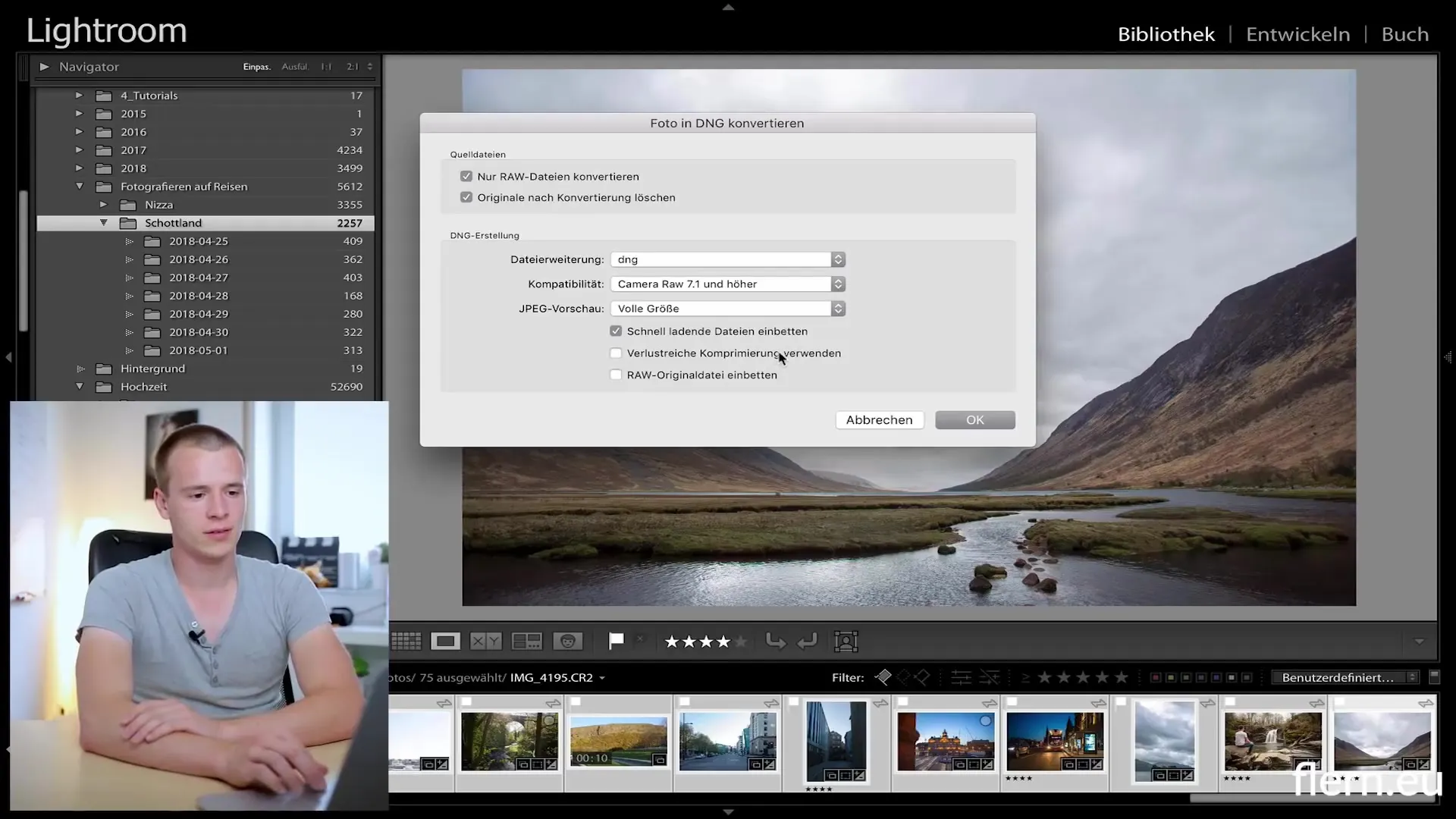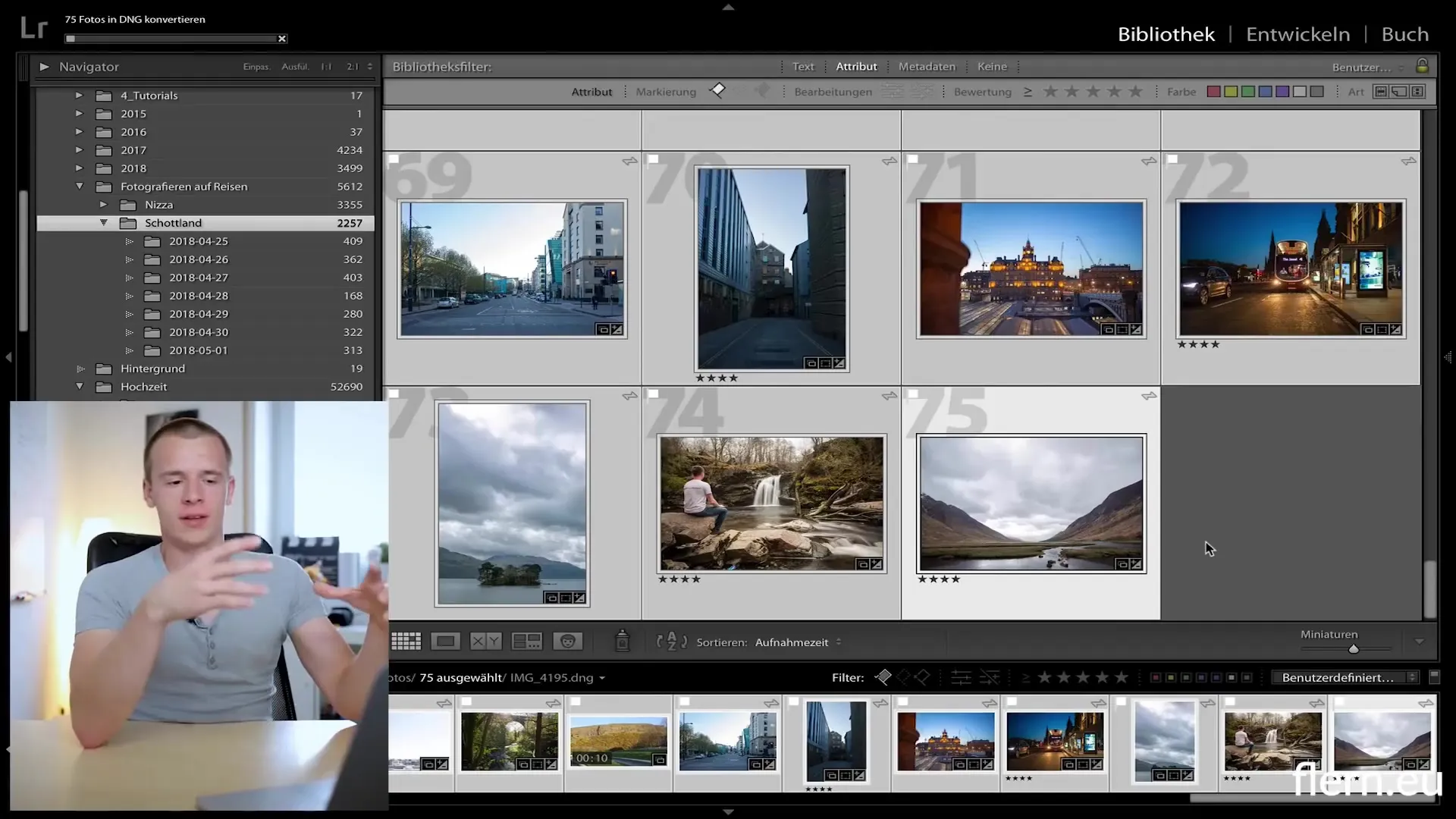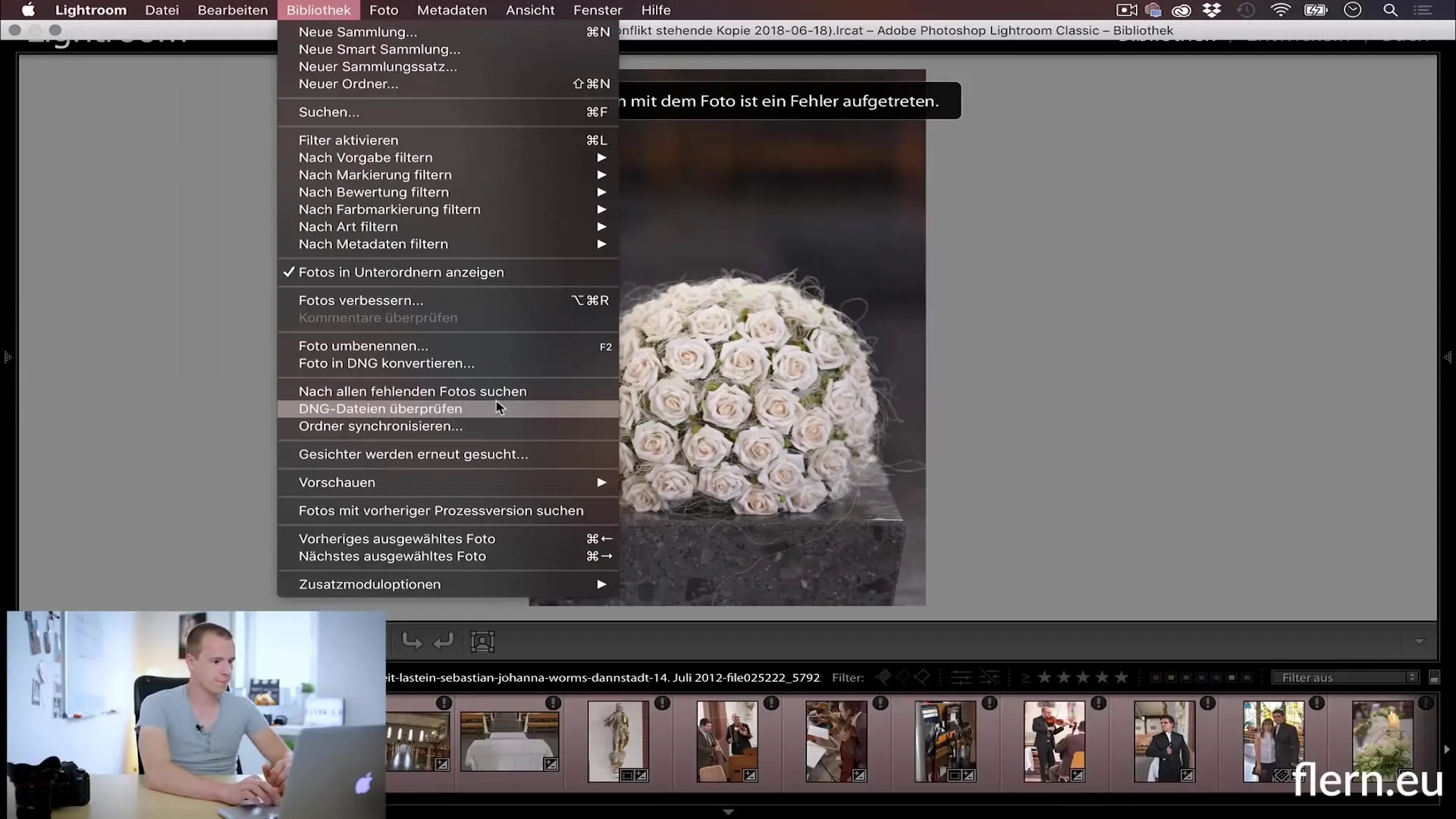In this tutorial, you will learn what the DNG format is and what benefits converting your RAW files to this format brings. DNG (Digital Negative) was developed by Adobe and promises better compatibility and efficiency, especially in programs like Lightroom. We will discuss the advantages and disadvantages of the DNG format and show you step by step how to successfully convert your images to the DNG format.
Key Findings
- The DNG format offers significant advantages in terms of storage space and compatibility.
- Converting to DNG can improve editing performance in Lightroom.
- There are specific preparations and settings you should consider before converting your images.
Step-by-Step Guide
Step 1: Understanding the DNG Format
Start by seeing the DNG format as a kind of universal RAW format developed by Adobe. Camera manufacturers usually adopt different RAW formats, like CR2 from Canon or NEF from Nikon. This format aims to address the challenges that can arise from the variety of RAW files.

Step 2: Advantages of the DNG Format
A crucial advantage of the DNG format is simplifying archiving. It allows for the consolidation of metadata and editing steps into a single file, significantly reducing the number of files in your catalog. This often also saves space, which can be immensely beneficial when dealing with large quantities of images.

Step 3: Converting RAW to DNG
To convert your RAW files to the DNG format, there are two basic methods. First, when importing, you can choose the option "Copy as DNG." This will cause Lightroom to convert your RAW files in the background while importing the images.

Step 4: Selecting and Converting Multiple Images
If you have already imported images that you want to convert, select them in your catalog in the Library module. Click on "Photo" in the menu bar and then on "Convert to DNG." Here, you can also enable the optional setting to delete the original files after conversion.

Step 5: Adjusting Important DNG Settings
Before starting the conversion, you should check some important settings. You can customize under the Import preferences whether JPEG previews should be created in different sizes. If you want to maintain the full quality of the images, make sure to leave the check marks unchecked for the options "use lossy compression" and "embed RAW original file."

Step 6: Monitoring Progress and Completing the Conversion
Once you click "OK," Lightroom will automatically start converting the selected images. It replaces the original RAW files with DNG files, meaning you don't have to take any additional steps. Monitor the progress in the respective area to ensure everything is running smoothly.

Step 7: Checking DNG Files
After conversion, it is advisable to check your DNG files to ensure no errors have occurred. Lightroom offers the option to check DNG files for integrity, helping you identify any defective files early on and prepare suitable backups.

Summary
Using the DNG format in Lightroom offers numerous advantages, especially in terms of storage efficiency and compatibility. The ability to create DNG files that store all editing steps and metadata in a single file can significantly simplify handling and managing your photosuite.
Frequently Asked Questions
How can I convert my RAW files to DNG?You can convert your files either during import or by selecting them in the Library module and clicking on "Convert to DNG".
What are the advantages of the DNG format?DNG files save storage space, are better organized, and offer more compatibility with various software applications.
Is converting to DNG always advisable?If you mainly work with Adobe software and manage many images in your catalog, DNG is a sensible choice.
Are there disadvantages to using the DNG format?If you switch to a different image editing program, support for DNG may be limited, making it difficult to use DNG formats.
Why should I create JPEG previews?JPEG previews help improve performance in Lightroom as your images can load faster.


